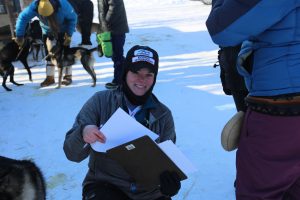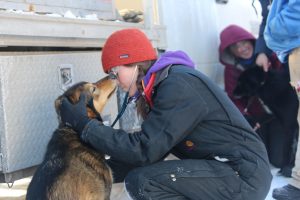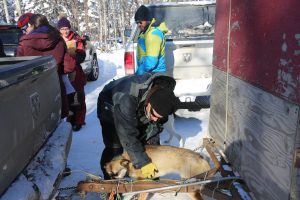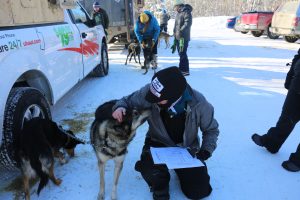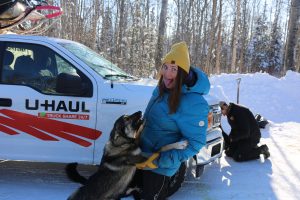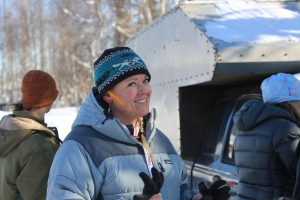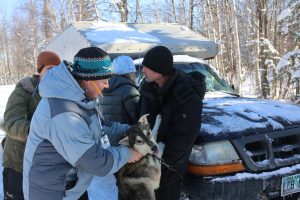Hello Iditarod Fans,
on my way to the Lakefront Hotel I stopped in at the ITC headquarters which was very busy. It is a like a big family reunion. Conversations pick up, where they left off a year ago. It was nice to catch up with Lance Mackey. Last I saw him was in White Mountain in the 2019 race, where he left together with Jessie Holmes on a fun run to Nome.
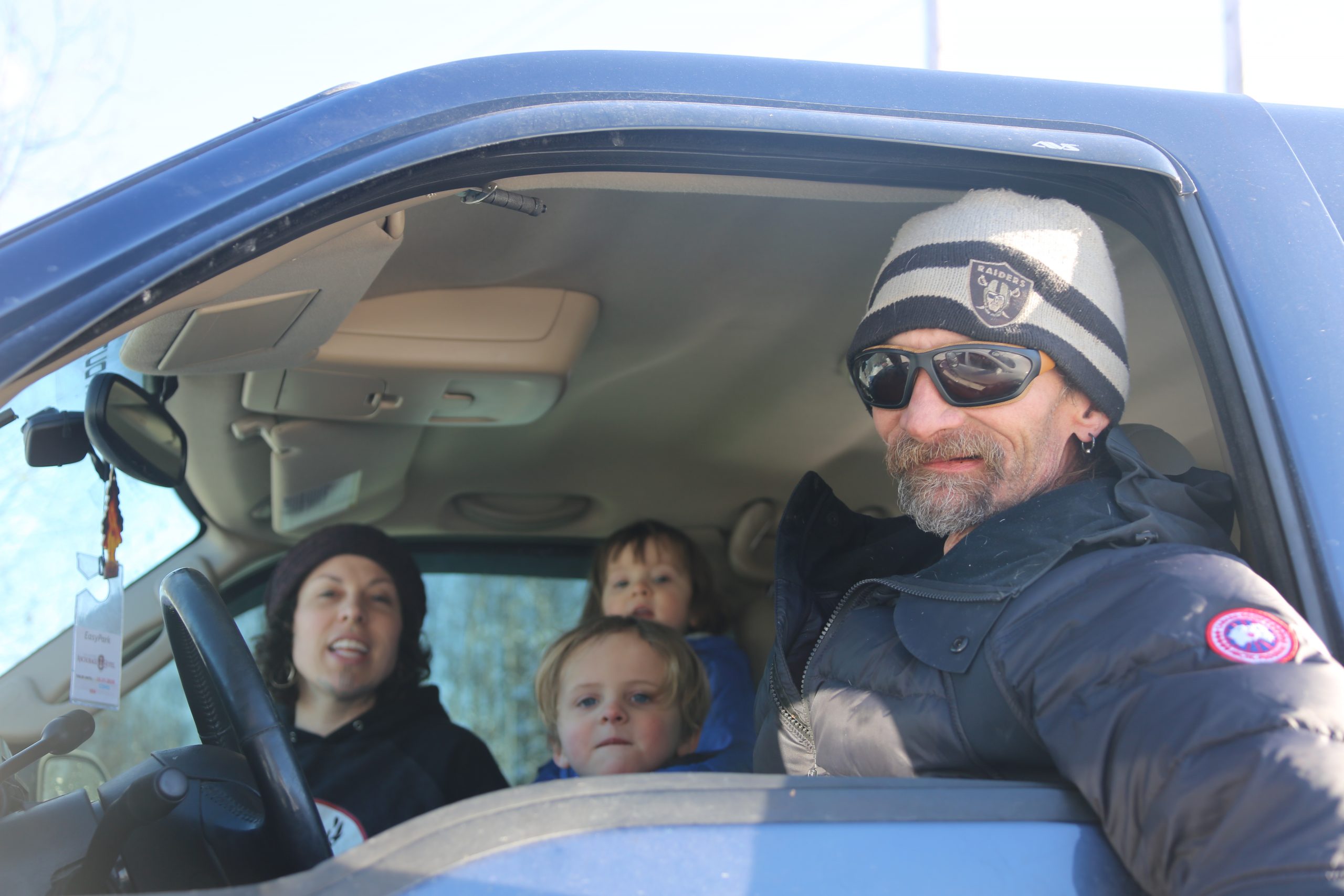
Lance with his family arriving a the vet check
Sharing my room in the Lakefront Hotel with one of the Veterinarians, Dr Strohberg from Colorado, is interesting. He is working on paperwork as I type this. Besides all of the microchip numbers for each dog, the ages of the team is also noted on the forms. Some mushers have vet checked only 16 dogs for their 14 dog team. Which means they are pretty set on who is going to make their team.
Others, like Jessie Royer has checked the maximum slate of 24 dogs, giving her a lot of dogs to pick and choose from. Age wise her team appears very harmonic, with the youngest dog being 4 and the oldest 8. Pretty much prime age with no yearlings in there. This should be a very trail savy team, with Jessie’s Top performances over the past years.
Jessie won both pre season races she entered. In the 300 Mile Idaho Sled Dog Challenge only 2 teams finished in very tough conditions. Jessie came out on top with her typical smile. Same in the Race to the Sky in Montana. She won it for a 5th time. Personally I am going to put some money on Jessie this year in Iditarod 2020
- Dr Kimberly Mc Creedy with Paperwork
- Most dogs love the veterinarians.
Martin Busers dog roster paints a very different picture. He is indeed driving a team of youngsters with the oldest dog being 4 years old and the majority of the team being indeed young dogs in training. This should be entertaining for Martin along the trail and also give him a lot of opportunity for rest stops along the checkpoints to socialize.
In the lab work the vets primarily look at hematocrit level, which goes down 1% a day during the race. So it is important that the dogs get into the race with a high level. Here’s a bit of Wikipedia info: Hematocrit (Hct) Level. This is the ratio of the volume of red cells to the volume of whole blood.
They look at CK. Level if it does not go too high. The same is looked at in high performance human athletes. Here another wikipedia explanation: CK stands for creatine kinase, an enzyme that leaks out of damaged muscle. When elevated CK levels are found in a blood sample, it usually means muscle is being destroyed by some abnormal process, such as a muscular dystrophy or inflammation.
Same as with human athletes, hydration is key. And with hydration come Electrolyte levels such as sodium. Sodium, Potassium. The lab work also looked at liver enzymes. All things the average pet never gets looked at thought their lifetime.
New studies find that the glucose levels in sled dogs do not go down as much as in ” normal ” dogs and that the Glycogen is going directly to the cells without the use of insulin. Sled Dogs can consume, and more importantly use, 10.000 to 12.000 calories a day. What a dream diet!.
Tonight at 7 p.m. all the vets will get together and compare notes from the various exams performed over the last few days.
The next interesting thing to look at will be the Mushers food drop sheets. They paint a pretty clear picture, of where each Musher intends to take their 24 hour layover, with sending the biggest food drop to that checkpoint. Usually most mushers give themselves a few different options with that. A kind of a Plan A,B,C thing.
Here a few pics from earlier today:
- Damon Ramaker dogs
- 1985’s Champion Dog box now going with Nic Petit
- Listening to heart and lungs
- Dr Mc Creedy greeting on of Tom Frode Johansen’s dogs
- Feisty one
- Nora Sjarlin Quest Rookie of the year
- Dr Katherine Van Duine from Valdez
- Dr Van Duine with one of Jeremie Kelller’s dogs
- Ready as ready can be!
- Most dogs really like the vets




